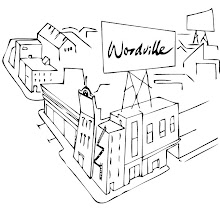 My
name is Emily Smith and I’ve been working at Wordville for the past three days
on work experience. It’s certainly safe to say that I’ve had far more
opportunities working here than I would have had done in Tesco, and I am very
grateful for the chance to work here and for the insight the experience has
given me into how PR really works.
My
name is Emily Smith and I’ve been working at Wordville for the past three days
on work experience. It’s certainly safe to say that I’ve had far more
opportunities working here than I would have had done in Tesco, and I am very
grateful for the chance to work here and for the insight the experience has
given me into how PR really works.
Day
one: The commute. With the number of large business men surrounding, getting to
work was a daunting prospect in itself. Once
here I was bombarded with tasks: clippings, magazine overviews, meeting
arrangements and more. I quickly started on clippings. All of this work was
shocking, as my friends’ texts complained they did nothing but watch videos on Youtube,
make teas and watch men e-mail all day.
Although
work is never supposed to be fun, I was happy to get on with it. That way I
wasn’t twiddling my thumbs for hours like my friends back in High Wycombe.
Day
two: Clippings finally finished, onto the next tasks. One thing that I appreciate
is the kettle. As on weekends I seem to have a cuppa every couple of hours, schooldays
feel like 6 hour long periods of tea deprivation. The copious tea consumption
at Wordville meant there was always a cup of PG’s on hand. I was also given the
huge responsibility of post duty which was an honour.
2:40pm
I left Wordville towers to get the train and sit in on a client meeting. This
was beneficial as it gave me an idea of the client PR relationship and the way
in which collaboration is crucial. This also meant an early finish. By 4:10pm I
was out of the meeting and on Tottenham Court Rd with Dorothy Perkins and a
rather nice blue dress calling my name.
Day
three: Today I have written up meeting notes, researched PR stunts and now I’m
just waiting for Jess’ tasks, bobbing along to a bit of Radio 1.
Tomorrow
there is a video streaming that I’ve signed up to watch on www.prweeklive.com and I’m also being
taken along to another client meeting at that I’m looking forward to.
Overall
my experience at Wordville so far has been very enjoyable and everybody here
has been very welcoming in the office.
So
for my impressions: Lucy is very on the ball during work, with bags of energy
in the way that she speaks and acts. Jess is hugely competitive and always well
prepared. She knows exactly what is needed when it comes to her clients. Steph
is calm and very efficient in the tasks that she does, whilst Pema is a great
guide and explains everything extremely well. Last but not least, Polly is great
and very ‘in the know’ with her work and prepared for what anyone throws at
her.
By Emily Smith
Before
I came to the company I thought PR was simply organising events for businesses.
Working at Wordville has shown me that PR here is all about helping companies ‘punch
above their weight’. The Wordvillains have fun but also really care about their
clients, and this is something I admire.
By Emily Smith



